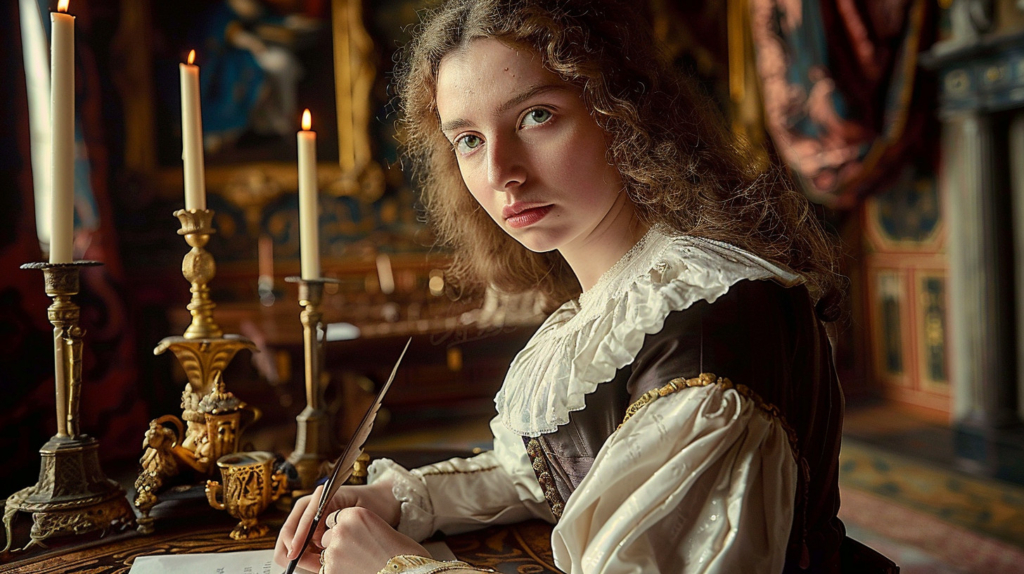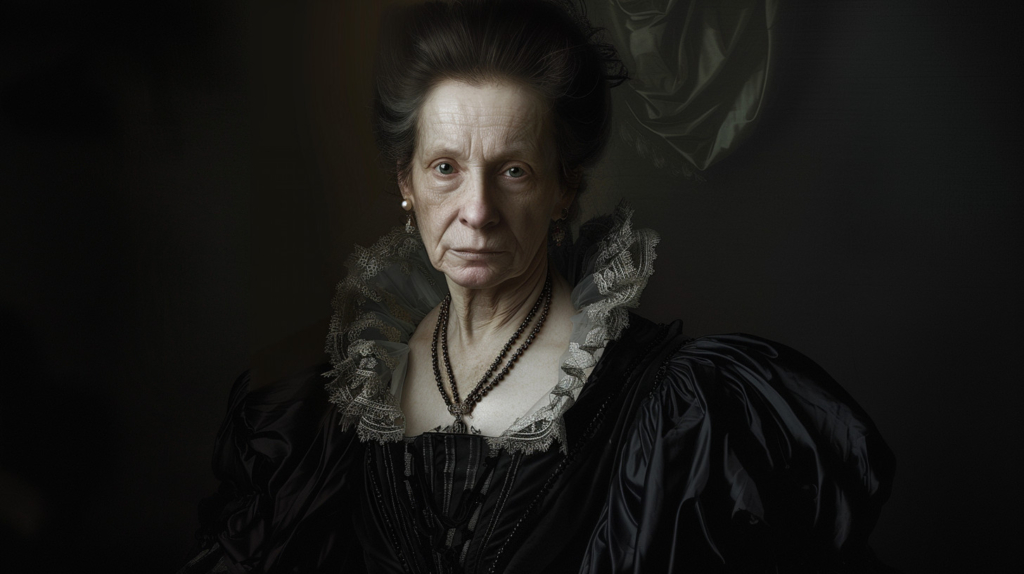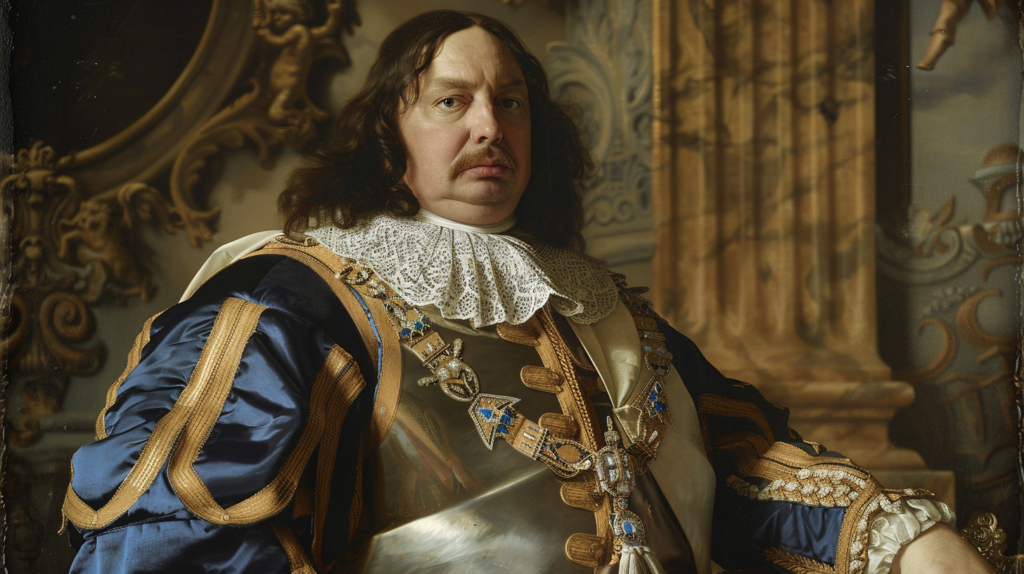In the last post about Maria Eleonora of Brandenburg, we learned that her daughter, Kristina, was taken from her by her enemies in the Privy Council, who ruled Sweden while Kristina was a minor.
For a few years she tried to regain custody of her daughter, but eventually she gave up. She had had enough of the cold and hostile Sweden, and in 1640 she did something unbelievable. With help from the Danish ambassador she secretly fled to Denmark.
Kristina, now 14 years old, later wrote about how shocked both she and the Council were at this. Even if the Council may have thought it a bit of a relief to be rid of the difficult dowager queen, it was still shocking and not a little embarrassing for them that she fled the country, and to the Danish enemy, at that!
But Maria Eleonora’s troubles were not over. Nobody really knew what to do with the fugitive queen. She wanted to go to Brandenburg, where her nephew Fredrik William ruled, but she had no money and the nephew was not really that thrilled to receive her.
But eventually she got on. A deal was made with the Swedish government, where she was granted financial support from Sweden. Although, this was not given directly to Maria Eleonora but to her nephew, who in reality became her guardian. Another insult from the Council.

In 1644 Kristina became of age, took over as regent and began working to get her mother home to Sweden again, despite some resistance from the Council. The dowager queen and her escape were still a sensitive issue. But Kristina argued that the monarch’s mother could not be in exile, and in 1648 Maria Eleonora returned to Sweden.
Kristina showed her mother every courtesy, gave her castles and make sure she finally received her inheritance. Maybe their relationship wasn’t an uncomplicated one, they had after all been separated for many years. But they shared a passion for theatre, and attended many shows together, and visited each other regularly.
In one area Maria Eleonora and her old enemies now agreed – Kristina must get married. They had chosen her cousin Karl Gustav for her. But Kristina, like her mother, was not that easily lead. Instead, she made the Council approve Karl Gustav as her heir, and on June 6, 1654, she abdicated to throne in favour of her cousin.
Then she did what her mother had done many years ago, and left the country. Maria Eleonora though remained behind, and it is said that her daughter’s abdication was a source of grief for her. We can only guess at her feelings when Kristina converted to catholicism – the very religion her beloved Gustav II Adolf had died fighting.

Maria Eleonora was overshadowed by the new royal family, Karl X Gustav and his new bride, Hedvig Eleonora. Her last official appearance was at their wedding in October 1654.
On March the 18th, 1655, Maria Eleonora passed away at Stockholm castle, 55 years old. She has been remembered as a hysterical widow, despondent with grief and incapable of taking care of her own daughter. This is an unfair image of her.
She was a woman in a man’s world, who fought for her rights, for influence and economic resources, but lost the fight against the powerful men who ran the country. Her only child was taken from her, and instead of being a passive bystander, she chose to take her faith into her own hands and leave the country she felt so lonely in.
Maria Eleonora was far from the fickle and volatile woman she has been portrayed as.

With Kristina’s abdication the kingship passed from the Vasa family to the Palatinate family – in Sweden called the Pfalz-dynasty (Karl X Gustav pictured above).
Maria Eleonora of Brandenburg was thus the last of the Vasa queens, the women who had been by the Vasa kings’ sides through 130 yeas of power-struggles, wars and bloody family feuds. They were not just wives and mothers, but power players in their own rights who made lasting impressions not just in their own time, but in Swedish and Nordic history.
Sources:
Lindqvist, Herman. Historien om alla Sveriges drottningar. (2006)
Matthis, Moa. Maria Eleonora – Drottningen som sa nej. (2010)
Tegenborg, Falkdalen, Karin. Svenska drottningar – i blickfånget från Vasatiden till idag. (2020)

